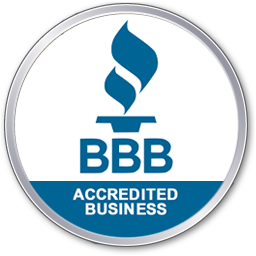If your home has tested positive for too high of a level of radon, you are not alone. Research shows that the radon level in one out of 15 houses in America should be decreased.
Unfortunately, high levels of radon can pose health risks, but fortunately, radon mitigation systems can help you to reduce your radon levels.
Consider the various systems you can use to lower your radon levels below.
What is Radon?
This chemical is a naturally occurring gas that is radioactive. Small amounts of this gas are released into the atmosphere when the radioactive elements present in rocks and soil (for example, thorium and uranium) begin to decay.
This odorless and colorless gas is generally harmless when you come into contact with it outside. However, radon can enter houses through foundation holes and cracks, as well as through a house’s well water system. The gas then becomes trapped in the home, and that’s when it can pose health concerns.
Exposure to radon can occur in all types of houses. These include homes built on slabs, those with crawl spaces, and houses with basements. However, radon exposure is most likely to happen in tightly sealed and extremely well insulated houses.
Your home has too much radon in it if the radon level is 4 picoCuries a liter, or 4 pCi/L.
If your levels of radon are too high, you can use a radon mitigation system to reduce them. Radon mitigation systems can also keep radon from entering your home.
The chief types of radon mitigation systems to choose from include “core,” sump pit, sub-membrane depressurization, combination, and passive systems.
“Core” Radon Mitigation Systems
With the “core” radon mitigation system, soil is removed to develop a pit beneath your home’s foundation.
Installing this type of system involves drilling, or “coring,” a hole in your concrete slab. The hole should be a few inches wide. Then, soil must be removed from the hole.
Next, your new pit must be connected to a radon fan using a pipe pathway made of PVC. The radon fan should be placed in the garage (if the area above it doesn’t have a living space), in the attic, or outdoors.
This process is necessary for venting the gasses in the soil and reducing pressure below the slab.
Pros/Cons
- The benefit of the core radon mitigation system is that when the pipe is installed correctly, it produces a secure, airtight seal that will definitely reduce your radon levels.
- The disadvantage is that you might notice a small increase in your energy bill due to the use of the fan. You might also lose a small amount of your home’s conditioned air.
Sump Pit Radon Mitigation Systems
This type of radon mitigation system uses a home’s existing system for rainwater drainage. These systems are usually found in homes that were built before the 1980s.
With these systems, sump pits are typically attached to perimeter drains, French drains, or drain tile systems. The system’s drainage pathway efficiently moves air beneath the basement. This “highway” of air can be used to create a vacuum beneath the slab for outstanding radon mitigation results.
Creating this system involves developing and installing an airtight sump pit lid. Then, a penetration is created in the sump pit lid for a radon pipe as well as a discharge pipe for pump water.
Next, a pipe pathway made of PVC is created and connected to a radon fan to remove gasses from the soil and decrease the pressure below the slab. The pipe should be run to the roof from your basement.
Pros/Cons
- The benefit of this system is that it is quick, inexpensive, and convenient, as it involves using an existing home drainage system. The drawback of this type of system is that if the system isn’t installed properly, the fan may produce an undesirably loud sound.
Sub-Membrane Depressurization (SMD) Systems
This type of system is most frequently used in houses that have crawl spaces or foundations featuring exposed dirt.
SMD systems involve sealing homes’ crawl spaces with vapor barriers, then using radon systems to produce vacuums beneath these membranes. This keeps radon from entering, and it also vents the gas to a safer location — the outdoors.
To install this system, a professional should drape a plastic (high-density polyethylene) liner that is reinforced over the earthen floor. The seams of this vapor barrier need to be sealed, and its edges should be sealed to your foundation’s walls.
Then, the combination of a fan and vent pipe is utilized to suck radon out of the space beneath the liner and take it outside. Perforated and corrugated landscaping pipe is a great option for this application.
During the radon removal process, the plastic membrane will be drawn down firmly against your crawlspace’s soil.
Pros/Cons
- The main benefit of the SMD system is that it’s usually deemed most effective compared with other mitigation methods if installed correctly. In addition, is cost effective for crawlspaces. For this reason, it is a top choice compared with crawlspace ventilation for radon mitigation.
- These systems also work well with lower-vacuum radon fans, which are quieter than their higher-volume counterparts. In addition, because the vapor barrier is sealed so tightly, this limits how much radon comes into your home through your crawlspace’s dirt.
- The drawback of the SMD system is that it requires the creation of a sealed vapor barrier, which might be hard to accomplish in certain crawlspace or basement configurations. This might be due to the presence of uneven walls. Other obstacles include access limitations or even the presence of numerous pipes or supports that the barrier must be sealed around.
- If the vertical space in your crawlspace is limited, this might also pose a challenge for an SMD system.
- In addition, if people walk on the membrane, this can damage it. For this reason, it may be necessary to use a covering, like rubber roofing, to protect the barrier. Geotextiles, synthetic materials that are permeable, can also be used to prevent your membrane from being damaged.
Combination Radon Mitigation Systems
A combination radon mitigation system is essentially a combination of two of the above-listed systems.
For instance, your home may feature a basement and crawlspace, but it doesn’t have a sump pit. In this situation, you could go with a “core” and sub-membrane system.
Pros/Cons
- A major benefit of a combination system is that you should be able to tell instantly if the system is working. If installed correctly, your system’s fan operation indicator will be situated where you can see it easily.
- The disadvantage of a combination system is that because the pipe exits the home, it might be unsightly. In addition, if you live in a colder climate, your radon fan could freeze up during the winter season.
Passive Radon Mitigation Systems
This type of system is typically found in a newly constructed home. This is because these systems are best suited for buildings that are already sealed properly to keep radon from coming into them.
The system works by circulating air throughout your crawlspace or basement using ventilation. To achieve this, a professional will install duct beneath your slab and allow it to open to your rooftop through your home’s interior. The system is essentially built into your home’s structure.
Pros/Cons
- A benefit of this type of system is that it doesn’t require the use of a radon fan. This means lower energy costs and no fan noise. It is also a good option in colder climates because no fan is needed.
- The drawback of this system is that it’s not as effective in a home with very high radon levels. In this situation, a system that uses a fan will be needed.
How Alpha Environmental Can Help
Several types of radon mitigation systems are available to keep your home’s radon levels in a safe zone. Whether you choose a “core,” sump pit, sub-membrane depressurization, combination, or passive system, you can be confident that your system will help to keep your building safe for years to come.
At Alpha Environmental, we are proud to be a leading provider of quality radon mitigation systems. We would be glad to help you to choose the right one for your home or business in Greater Portland.
We are fully licensed, insured, and bonded, so you can trust the quality of our services.
Get in touch with us to learn more about how our radon mitigation experts can meet your environmental needs today.




